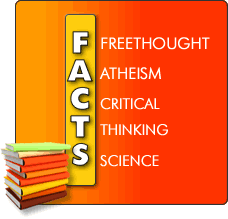For those with just not enough time (everybody?), might I suggest a summary of the book by a very competent guy, Aaron,
on the newbooksinbrief site. He does a great job with thorough summaries of some of the most significant new nonfiction books. Diamond's book is one of his latest summaries.
http://newbooksinbrief.com/archived-articles/
-
In total there are 0 users online :: 0 registered, 0 hidden and 0 guests (based on users active over the past 60 minutes)
Most users ever online was 813 on Mon Apr 15, 2024 11:52 pm
Summary of The World Until Yesterday
- DWill
-

- BookTalk.org Hall of Fame
- Posts: 6966
- Joined: Thu Jan 31, 2008 8:05 am
- 16
- Location: Luray, Virginia
- Has thanked: 2262 times
- Been thanked: 2470 times
- Robert Tulip
-

- BookTalk.org Hall of Fame
- Posts: 6502
- Joined: Tue Oct 04, 2005 9:16 pm
- 18
- Location: Canberra
- Has thanked: 2721 times
- Been thanked: 2665 times
- Contact:

Re: Summary of The World Until Yesterday
The big idea in this book is that modernity has cut humanity off from important evolutionary traits that were present in primitive society. Over the last two million years, humans evolved living in small bands, until the rise of agriculture in the Holocene less than ten thousand years ago. The unprecedented emergence of the state enabled specialisation, social peace, surplus value, and alienation from nature. Traits in child rearing and social interaction were changed by the larger communities allowed by urbanisation.
Diamond sees much in pre-modern existing traditional societies such as in New Guinea that is useful to learn from. For example, non-state dispute resolution through mediation and apology can resolve conflict, especially for people who have to interact again in future.
The alienation from nature seen in modern culture is an evolutionary negative for humans, in that we need to reconcile our life to the natural environment that supports it. So Diamond has immense respect for traditional societies, especially those that live outside of contact with modernity. There are in fact still isolated people who have no wish to interact with the broader world and who maintain traditional lifestyles in many respects. Diamond respects the sense of autonomy and self reliance of traditional people, whose methods were universal among humanity for more than 99% of our hominid evolution. In terms of time, hunter gatherer methods occupy over 99% of the period since humans diverged from australopithecines two million years ago.
Diamond sees much in pre-modern existing traditional societies such as in New Guinea that is useful to learn from. For example, non-state dispute resolution through mediation and apology can resolve conflict, especially for people who have to interact again in future.
The alienation from nature seen in modern culture is an evolutionary negative for humans, in that we need to reconcile our life to the natural environment that supports it. So Diamond has immense respect for traditional societies, especially those that live outside of contact with modernity. There are in fact still isolated people who have no wish to interact with the broader world and who maintain traditional lifestyles in many respects. Diamond respects the sense of autonomy and self reliance of traditional people, whose methods were universal among humanity for more than 99% of our hominid evolution. In terms of time, hunter gatherer methods occupy over 99% of the period since humans diverged from australopithecines two million years ago.
Last edited by Robert Tulip on Sun Feb 03, 2013 12:01 am, edited 2 times in total.

